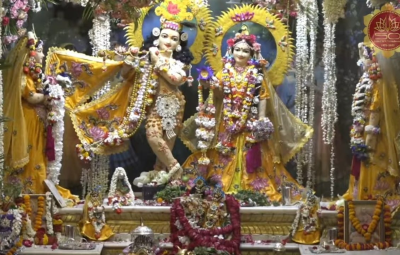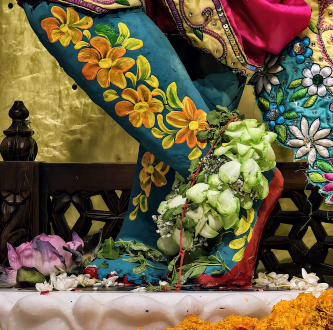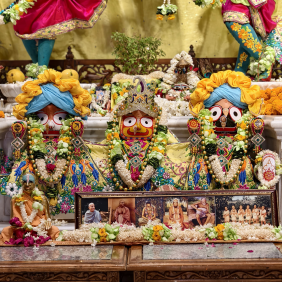The Sweet Summer Ritual: Lord Krishna and Chandan Yatra
Summer season has started in India. Mercury is rising. The followers of Lord Krishna have started preparing for one of the most calming and sacred ritual: The Chandan Yatra. Why is sandalwood paste applied to the idol of The Lord on a daily basis during such hot summer months? The response lies deep within the layers of mythology, tradition, faith, and practicality.
Table of Contents
The Mythological Story Behind Chandan Yatra
Our Sanaatan scriptures say that as per the Vaishnava customs, Chandan Yatra started when Lord Jagannath (Lord Jagannath is an incarnation of Lord Krishna) agreed to undertake a symbolic pilgrimage to get relief from the scorching heat.
As the story goes on, Mata Lakshmi requested that The Lord be shielded from the sun during summer. So, devotees of The Lord started applying Chandan (sandalwood paste) on Lord Krishna and His divine companions. The coolness of sandalwood was thought to provide relief and comfort to the Lord during the scorching summer days.
This symbolic act wasn’t just about physical coolness. It became a beautiful expression of Bhakti (devotion), serving the Lord with love, tenderness, and care, just as one would care for a beloved family member.
Why Sandalwood?
In Ayurveda and Vedic rituals, sandalwood holds cooling, healing, and purifying properties. Its fragrance is said to calm the mind, and its paste, when applied, cools the body naturally. By offering Chandan to Krishna, devotees believe they are helping the Lord stay cool – both physically and spiritually.

Spiritual Meaning Behind the Ritual
The Chandan Yatra is not only a ritual, it’s a lesson in seva (selfless service) and surrender. Just as Krishna accepted simple offerings from his devotees in Vrindavan with love, this ritual reminds us that even the smallest acts of love offered with purity can please The Divine.
It’s also symbolic of applying devotion as a balm to The Lord, and by doing so, devotees also feel a deep inner peace.
When is Chandan Yatra Celebrated?
Chandan Yatra usually begins on Akshaya Tritiya. It continues for 21 days and coincides with the intense heat in India. It is especially celebrated in:

- Puri, Odisha (Jagannath Temple)
- Vrindavan and Mathura
- Udupi in Karnataka
In these places, grand processions of deities, cool water rituals, and daily sandalwood application become part of the summer devotion.
Devotees who are unable to visit the temple do this Chandan seva at home. It is a blissful divine experience. Alternatively one can visit the nearby ISKON temples to participate in the Chandan seva.

Conclusion
In a world where devotion often becomes complicated, Krishna’s sandalwood journey reminds us that love is in the little things. Applying sandalwood is more than a ritual – it is a sign of deep care, a way of saying, “I am thinking of you in this heat.” It is cooling for the body, peace for the soul and a connection to The God.
FAQ: Frequently Asked Questions
What does Chandan Yatra mean?
It’s a sandalwood application ritual where deities are anointed to stay cool during summer.
Which deity is worshipped in Chandan Yatra?
Lord Krishna, especially in the form of Jagannath, Balabhadra, and Subhadra.
Can I do Chandan seva at home?
Yes! Apply sandalwood paste to your Krishna idol or picture with devotion during the summer.














Excellent insight on the spiritual details of chandan yatra.
Hare Krishna! Glad you liked it. May Lord Krishna shower blessings on you!